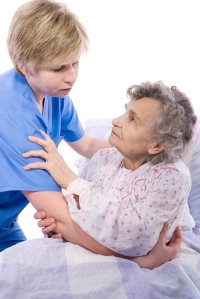This domain is about the physical ability to breathe. The physical ability can be affected by psychological issues, such as panic attacks. Usually when breathing is affected by psychological problems, then they tend to be periodic rather than constant, so there would be episodes of breathlessness that relate to panic attacks, which pass when the panic attack passes. This is a bit of an over generalisation, but that is usually what I’ve seen in my clients. Those clients who suffer from panic attacks need some comfort and reassurance and the worst of the stress passes, at least for a while.
Of the many clients that I’ve helped, there have been a lot with no breathing issues at all. There have also been quite a few with relatively mild breathing problems, that don’t need inhalers. They get breathless on exertion, so that when they walk, they have to do so relatively slowly. It would prevent them going for a long walk, but in all likelihood, they wouldn’t be going for a long walk anyway, as they have other health problems that prevent them from doing so. Again, a huge generalisation.
Breathing issues more than this is unusual in relation to the clients that I have had. I’ve have had quite a few that would score as above as “no needs” or “low needs”, but usually not more than that. On occasions I’ve had clients with asthma or occasionally COPD or plural plaques, but these conditions are thankfully relatively rare. I’ve had lots of clients that have some level of heart failure, which often presents as oedema in their legs; those clients are often breathless on exertion.
So now we are in the unusual territory of breathing issues that would score moderate or above. I’ve had a few clients like this, but not many. This is about breathlessness that has an effect on their lives and how they would like to live them, otherwise known as “activities of daily living”. When people are starting to have problems that are more than just a little breathlessness, this is when they will start to have therapies for them. They could be inhalers or nebulisers or oxygen. This domain, like the other physical health domains are easier from the aspect that they are about factual issues and are not so subjective.
It is therefore about whether these interventions help or whether people are still have trouble breathing and if they are having trouble, how much trouble. If they are able to respond to the treatment, even if they still have some breathlessness, then they would score moderate. If the therapies are not really helping and they are still gasping for breath, then they would score high. The other category for high is about having a tracheotomy, but this is unusual, but again factual and not subjective, so if they have one, they score high.
Severe is about having a tracheotomy that is not so successful and therefore requires some suctioning; I’ve never had a client with a tracheotomy yet. Severe difficulties breathing even at rest is, again, very unusual. This would be someone continuing to gasp for breath no matter what was tried to assist them in terms of therapies.
If someone scored priority, it would expect them to be in a specialised unit or hospital with the invasive mechanical ventilation. I would therefore expect them to be receiving the treatment free at the point of delivery, rather than a candidate for NHS Continuing Healthcare funding in a care home or in their own home. I stand to be corrected.






Leave A Comment